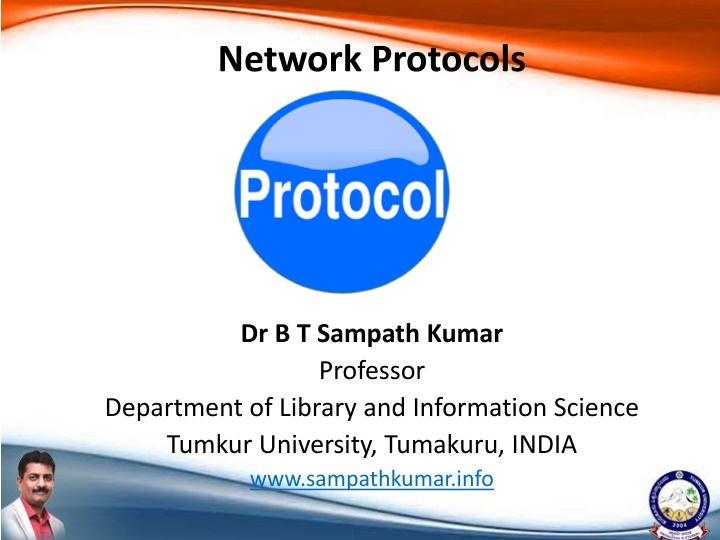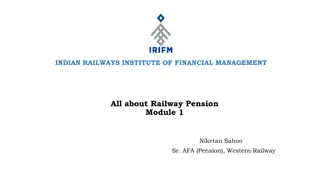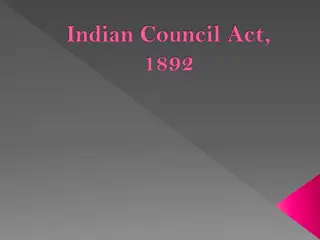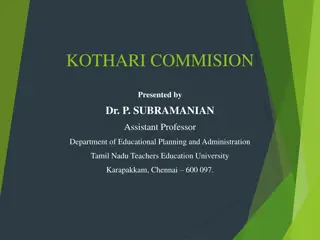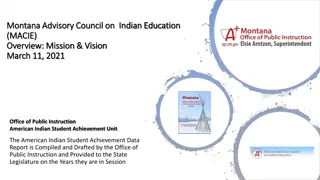Indian Education Commission and Kothari Commission 1964-66 Overview
Indian Education Commission, also known as Kothari Commission 1964-66, was a significant initiative to address education challenges in India. The commission was appointed with a diverse group of educationists to review and provide recommendations on the national education system. It emphasized a comprehensive examination of the entire educational structure.
Download Presentation

Please find below an Image/Link to download the presentation.
The content on the website is provided AS IS for your information and personal use only. It may not be sold, licensed, or shared on other websites without obtaining consent from the author.If you encounter any issues during the download, it is possible that the publisher has removed the file from their server.
You are allowed to download the files provided on this website for personal or commercial use, subject to the condition that they are used lawfully. All files are the property of their respective owners.
The content on the website is provided AS IS for your information and personal use only. It may not be sold, licensed, or shared on other websites without obtaining consent from the author.
E N D
Presentation Transcript
Network Protocols Dr B T Sampath Kumar Professor Department of Library and Information Science Tumkur University, Tumakuru, INDIA www.sampathkumar.info
Network protocol In telecommunication, a communication protocol is a system of rules. It is a set of rules that governs the communications between computers on a network.
Types of protocol The different types of network protocols are: HTTP/HTTPS FTP SMTP Ethernet TCP/IP
Hypertext Transfer Protocol (HTTP) HTTP is used for transmitting and displaying information in the form of web pages on browsers. This protocol defines how messages are formatted and transmitted, and what actions Web servers and browsers should take in response to various commands.
Hypertext Transfer Protocol Secure (HTTPS) The problem with the regular HTTP protocol is that the information that flows from server to browser is not encrypted, which means it can be easily stolen. HTTPS is used for secure communication over a computer network, and is widely used on the Internet. In HTTPS, the communication protocol encrypted using Transport Layer Security (TLS). is
File Transfer Protocol (FTP) FTP used for file transfer (uploading and downloading) over the Internet.
Simple Mail Transfer Protocol (SMTP) Simple Mail Transfer Protocol is used in email. Ethernet is used for data transmission over a LAN.
TCP/IP Transmission Control Protocol/IP, used for the reliable transmission of data over a network. It is the basic communication language or protocol of the Internet. It can also be used as a communication protocol in a private network (either an intranet or an extranet).
